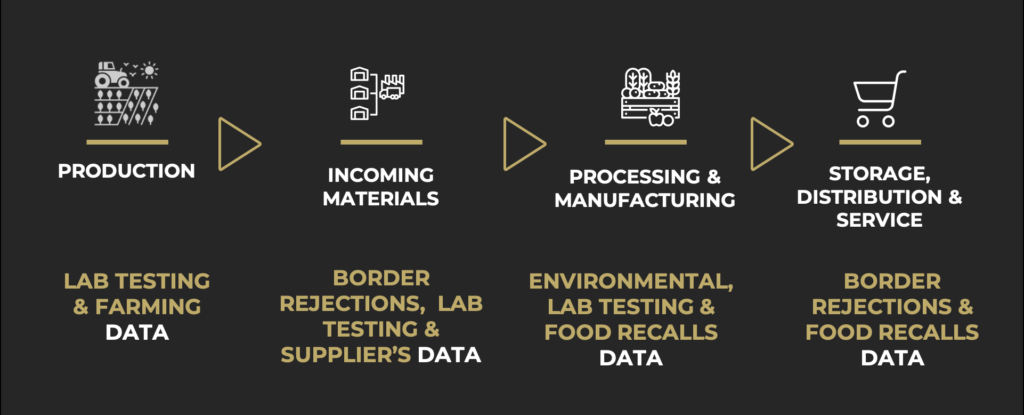As a food safety professional, there is a lot to take into consideration before making any decision about the supply chain. Food safety plays a key role in the company’s brand reputation, so product recalls and border rejections are causing serious damage to brand image and trust. Therefore, risk assessment should always be accurate, timely and reliable.
Risk assessment is one of the most important tools to prevent recalls. However, let’s face it. Today, risk assessment is approached as a checklist and it is not an optimized process yet. Sounds familiar? Too often this essential process is performed by analyzing relevant historical incidents using spreadsheets, despite the enormous investments made by the company in software systems. This cannot provide trustworthy results that would help experts to identify emerging and increasing risks.
The global supply chain is complex, and risks should be assessed at each level, from incoming materials and suppliers, to manufacturing, storage, distribution, and retail. As mentioned in a previous article, risk assessment is not something generic and cannot be addressed at a single level of food production.

The pandemic, followed by travel restrictions and lower budgets, has highlighted the need for systematic risk assessment supported by all global insights, thus, the highest effectiveness of a remote audit can be ensured. Each safety and quality assurance team needs to access the most relevant and historical data relating to recalls, border rejections, legislation, scientific publications, news, laboratory testing programs, new risk models, new methods, and systems. On the other hand, it does not mean that these professionals should be overwhelmed with countless data. Different teams must focus on different ingredients, food categories and hazards.
Nowadays, innovative research, improved testing technologies and monitoring systems, have resulted in an abundance of data on risks for the entire food supply chain. The problem is that data are so scattered, heterogeneous, multilingual, and disconnected, so that becomes impossible to handle them, unless we add some technology magic into the mix. It is not easy for the human mind to filter only the relevant information and data to identify trends and evaluate hazards. The analysis takes forever.
To overcome this liability there are several tools, online platforms, resources, even software systems to help, but it is still a time-consuming and error-prone process, because the professional would have to collect all the information, organize it in a spreadsheet, then analyze all the hazards, estimate the risk and finally report the results, which may be untrustworthy.

Nevertheless, risk scanning and assessment can be transformed from a serious challenge into a simple and reliable decision-making tool. How? By using efficient data processing workflows that include steps for collecting, processing, translating and semantic annotation and combining them with human intelligence, e.g. enriched data that are reviewed by food safety experts to enable high quality and harmonized data.
This can be achieved by using digital platforms that provide valuable insights, identify potential hazards and offer risk reports based on data collected from most national authorities from all around the world. These platforms offer a dynamic and automated approach to risk assessment that can identify increasing and emerging risks. Taking advantage of the computer’s power and the latest data technologies, we are now able to perform deep hazard analysis, supplier’s evaluation, and risk estimation in no time. That way redundant activities could be prevented, and a risk management strategy could be better built.
There is no point in being frustrated with inaccurate risk assessment reports. Digital platforms can assist in critical tasks by eliminating the human error and ensure well-informed decisions.
If you’d like to discover how FOODAKAI can help your Food Safety & Quality team prevent product recalls by monitoring & predicting risks, schedule a call with us!

